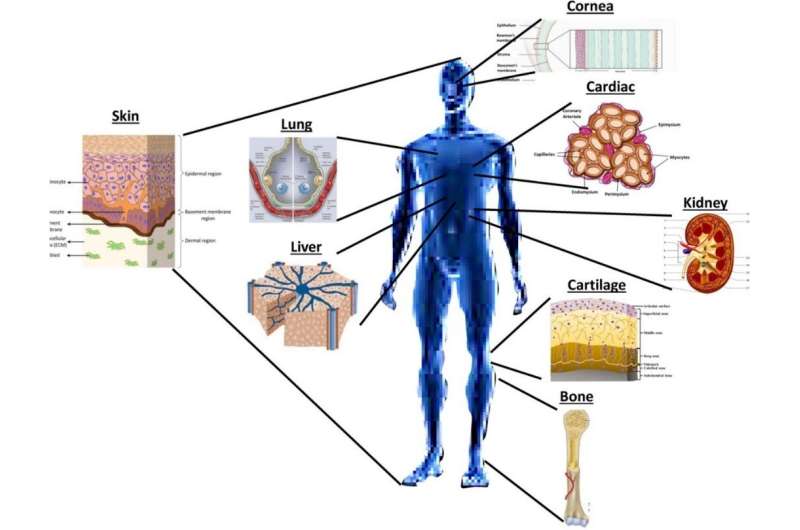SUTD leads in-depth review on the impending reality of 3D printed organs and analyses recent accomplishments, limitations and opportunities for future research. Credit: SUTD
3-D bioprinting is a highly-advanced manufacturing platform that allows for the printing of tissue, and eventually vital organs, from cells. This could open a new world of possibilities for the medical field, while directly benefiting patients who need replacement organs.
Instead of waiting for a suitable donor or having the risk of their body rejecting a transplanted organ, 3-D printed organs allow patients to have a customised organ fabricated specifically to replace their faulty ones. However, even with headway that 3-D bioprinting has made in the last two decades, it is still lacking significant strides in order to produce complex 3-D biomimetic tissue constructs.
According to researchers from the Singapore University of Technology and Design (SUTD), Nanyang Technological University (NTU) and Asia University, tissue culture techniques in particular require accelerated progress to address the bottleneck of maturing bioprinted multicellular 3-D tissue constructs into functional tissues. Their research paper, titled "Print me an organ! Why are we not there yet?" has been published in the Progress in Polymer Science.
In the paper, the researchers also provide in-depth review of recent improvements and analyse the bioprinting techniques, progress in bio-ink development, and implementation of new bioprinting and tissue maturation strategies. Special attention was also given to the role of polymer science and how it complemented 3-D bioprinting to overcome some of the major impediments such as achieving biomimicry, vascularization and 3-D, anatomically relevant biological structures in the field of organ printing.
The use of complementary strategies such as a dynamic co-culture perfusion system was seen as critical for ensuring maturation and assembly of bioprinted tissue constructs. Even though it is now possible to fabricate human-scale tissues or organs that can potentially mature into vascularized and partially functional tissues, the industry is still lagging behind in the bioprinting of human-specific tissues or organs due to the complexities in tissue-specific extracellular matrices (ECM) and the tissue maturation process—the lack of suitable co-culture medium to support multiple types of cells and the need for further tissue conditioning prior to implantation.
"While 3-D bioprinting is still in its early stages, the remarkable leap it has made in recent years points to the eventual reality of lab-grown, functional organs. However, to push the frontiers of medicine, we must overcome the technical challenges in creating tissue-specific bio-inks and optimizing the tissue maturation process. This will ultimately have a huge impact on patients' lives, many of whom may be reliant on the future of 3-D bioprinting," said Professor Chua Chee Kai, lead author of the paper from SUTD.
More information: Wei Long Ng et al, Print Me An Organ! Why We Are Not There Yet, Progress in Polymer Science (2019). DOI: 10.1016/j.progpolymsci.2019.101145
Provided by Singapore University of Technology and Design






















